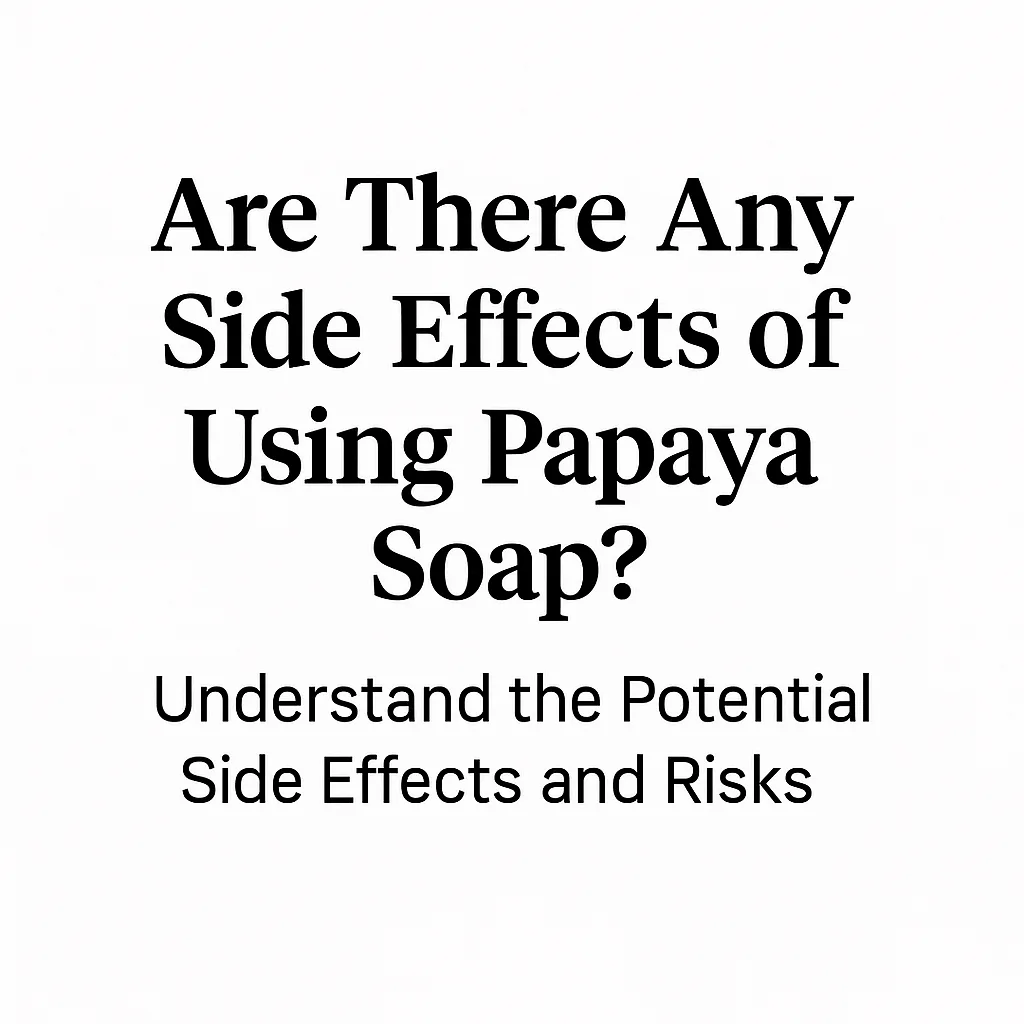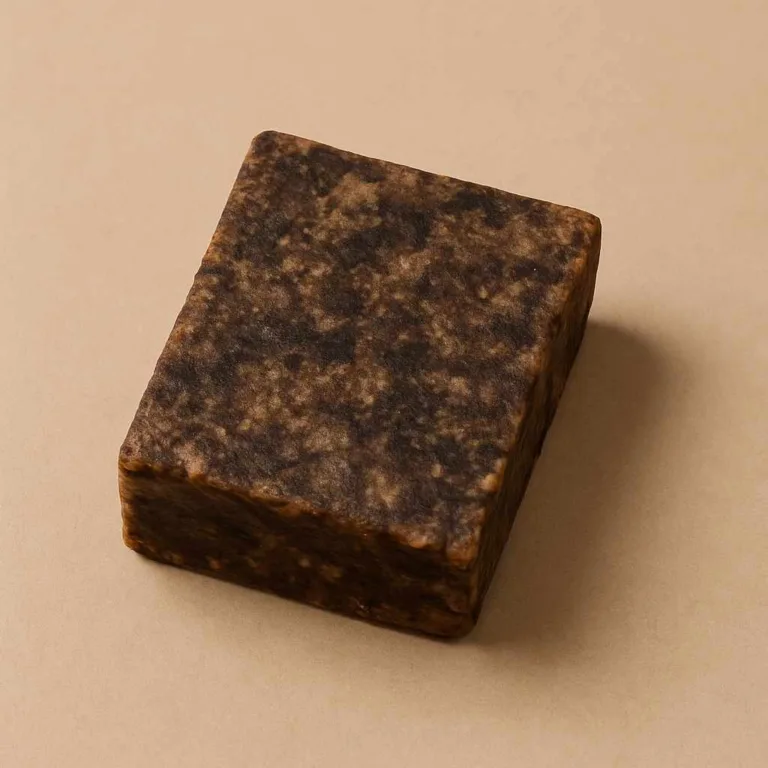As an expert with over a decade of experience in the nursing industry, I often encounter questions from individuals eager to explore natural skincare options. One query that frequently surfaces is about the Side Effects of Papaya Soap. With the growing popularity of papaya-based cleansers for their potential benefits like exfoliation and skin brightening, it’s crucial to understand both the advantages and possible drawbacks. In this article, we’ll delve deep into the Side Effects of Papaya Soap, helping you make an informed decision before incorporating it into your skincare routine. Let’s start by addressing the common concerns related to Papaya soap side effects and skin reactions.

1. Understanding the Basics of Papaya Soap
Papaya-derived soap is crafted from the extracts of papaya fruit, which is rich in enzymes, vitamins, and antioxidants. The star ingredient, papain, is a proteolytic enzyme known for its exfoliating properties. It breaks down dead skin cells, promotes cell turnover, and can even help in reducing the appearance of blemishes. While these benefits make papaya-based soap appealing, it’s essential to be aware of the Side Effects of Papaya Soap that might accompany its use.
According to the American Academy of Dermatology, a highly authoritative source in the field of skin health, any skincare product, including natural ones like papaya-infused soap, has the potential to cause adverse reactions in some individuals. This is why understanding the Side Effects of Papaya Soap is key to safe usage.
2. Common Side Effects of Papaya Soap
Skin Irritation
One of the most frequently reported Side Effects of Papaya Soap is skin irritation. For individuals with sensitive skin, the exfoliating properties of papaya-based cleansers can be too harsh. The papain enzyme, while effective at removing dead skin cells, may also strip away the skin’s natural protective barrier, leading to redness, itching, and dryness. Some people might even experience a stinging sensation when the soap comes into contact with broken skin or open wounds. If you notice any signs of skin irritation after using papaya-derived soap, it’s advisable to discontinue use immediately. You can learn more about Papaya soap side effects and skin reactions to identify and manage such issues.
Allergic Reactions
Allergic reactions to papaya-infused soap are less common but can occur, especially in those with a pre-existing allergy to papaya fruit or other ingredients in the soap. Symptoms of an allergic reaction can range from mild, such as a rash or hives, to severe, including swelling of the face, lips, or tongue, and difficulty breathing. If you have a history of allergies, it’s crucial to perform a patch test before using papaya-based soap. Apply a small amount of the soap to a discreet area of your skin, like the inside of your elbow, and wait 24–48 hours to see if any adverse reactions occur. This can help you avoid the potentially serious Side Effects of Papaya Soap associated with allergies.
Over-Exfoliation
Another potential downside related to the Side Effects of Papaya Soap is over-exfoliation. Using papaya-based cleansers too frequently or for extended periods can lead to excessive removal of the skin’s outer layer. This can disrupt the skin’s natural balance, causing it to produce more oil to compensate for the dryness. As a result, you might experience increased breakouts or a dull, rough complexion. To prevent over-exfoliation, it’s recommended to use papaya-derived soap no more than 2–3 times a week and always follow up with a good moisturizer.
3. Factors Influencing the Side Effects of Papaya Soap
Skin Type
Your skin type plays a significant role in determining whether you’ll experience the Side Effects of Papaya Soap. Individuals with sensitive, dry, or reactive skin are more likely to encounter issues like irritation and dryness. On the other hand, those with oily or normal skin might tolerate papaya-based soap better, but they still need to be cautious to avoid over-exfoliation. Understanding your skin type and its unique needs is essential when considering the use of papaya-derived products. If you’re unsure about your skin type or how it will react to papaya-based soap, you can explore resources on What to know before using papaya soap.
Ingredients in the Soap
The specific ingredients in the papaya-based soap can also impact the likelihood of side effects. Some papaya-infused soaps might contain additional fragrances, preservatives, or chemicals that could trigger allergic reactions or skin irritation. Always read the ingredient list carefully before purchasing papaya-derived soap. Opt for products that use natural, gentle ingredients and avoid those with potential irritants. Additionally, be aware that different brands may formulate their papaya-based soaps differently, so it’s important to do your research and choose a reputable brand.
Frequency of Use
As mentioned earlier, the frequency of using papaya-based soap can greatly influence the occurrence of Side Effects of Papaya Soap. Using it too often can lead to over-exfoliation and other issues. Even if your skin tolerates the soap well initially, excessive use over time can still cause problems. It’s important to find the right balance and use papaya-derived cleansers in moderation. If you’re wondering Is papaya soap safe for daily use?, the answer depends on your skin type and how your skin responds to the product.

4. Minimizing the Side Effects of Papaya Soap
Patch Testing
Performing a patch test is one of the most effective ways to minimize the risk of experiencing the Side Effects of Papaya Soap. As described earlier, apply a small amount of the soap to a small area of your skin and observe for any signs of irritation or allergic reaction. If there are no adverse effects after 24–48 hours, it’s generally safe to use the soap on a larger area of your body. However, keep in mind that even if you pass the patch test, you may still experience side effects if your skin’s sensitivity changes over time.
Using in Moderation
Limit the frequency of using papaya-based soap, especially if you have sensitive skin. As a general rule, 2–3 times a week is sufficient for most people. This allows your skin to benefit from the soap’s exfoliating properties without over-stressing it. Also, make sure not to leave the soap on your skin for too long during each use. A few minutes is usually enough for the papain enzyme to do its job.
Moisturizing Properly
After using papaya-derived soap, it’s crucial to moisturize your skin thoroughly. This helps to replenish the moisture lost during exfoliation and maintain the skin’s natural barrier. Choose a moisturizer that is suitable for your skin type and free from potential irritants. Regular moisturizing can help reduce the risk of dryness, itching, and other Side Effects of Papaya Soap associated with exfoliation.
5. Weighing the Benefits and Side Effects of Papaya Soap
While the Side Effects of Papaya Soap are important to consider, it’s also essential to recognize the potential benefits. Papaya-based soap can effectively exfoliate the skin, improve its texture, and even help with issues like acne and hyperpigmentation. By understanding both the benefits and possible downsides, such as those detailed in Benefits and possible downsides of papaya soap, you can make a more balanced decision about whether papaya-derived products are right for you.
In conclusion, like any skincare product, papaya-based soap comes with its own set of Side Effects of Papaya Soap. By being informed, performing patch tests, using the soap in moderation, and moisturizing properly, you can minimize the risks and potentially enjoy the benefits it offers. If you have any concerns or questions about the Side Effects of Papaya Soap or how to use it safely, it’s always a good idea to consult a dermatologist or skincare professional.
